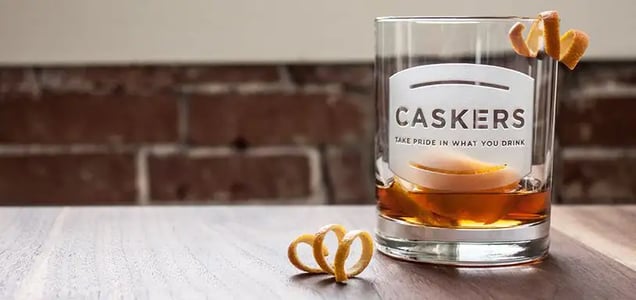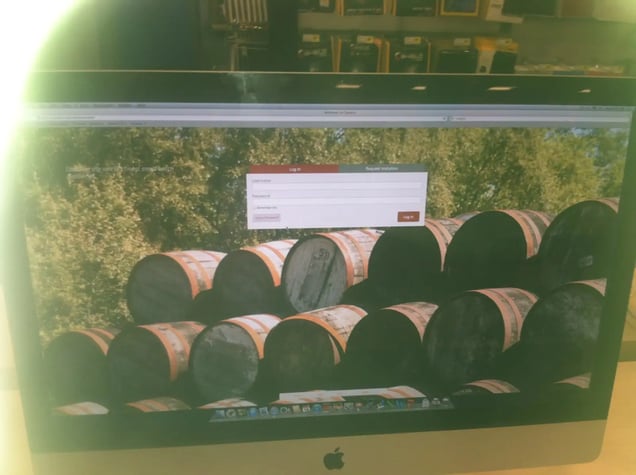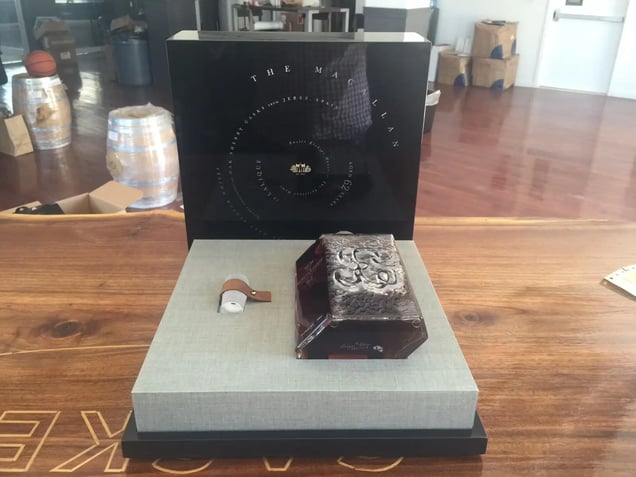The Hair of the Dog is a sports bar located in the Lower East Side of Manhattan. Like most sports bars in New York, it has an ungodly number of televisions, a beer pong table and 3.5 stars on Yelp. More importantly, though, Hair of the Dog has a single dollar price rating, which is really important when your goal is to be drunk by 3 p.m..

In October 2013, my cofounder and I were in negotiations to sell Caskers, an e-commerce site we founded just one and a half years earlier that sold spirits (booze, not ghosts) online. The negotiations had already dragged on for a few months, and we were days away from our scheduled closing date. If you’ve ever been in the same situation before, you know that your mind starts wandering and thinking about all the possibilities that could derail the sale of your company. It also starts thinking about ways you could spend millions of dollars, but you try not to put the cart before the horse.
The week before my company sold, there was little I could do except sit around and wait. My team (there were three of us at the time — my cofounder, our first employee, and me) would come into the office around 9 a.m. and finish up whatever pressing tasks we had for the day by noon. Then, we’d go to Hair of the Dog and try to kill time by drinking until happy hour ended at 8 p.m..
The week we spent at Hair is a hazy blur for me, but I’ve had more than a year of sobriety to reflect on the business that I started, grew, and sold. These are the five most important lessons I learned from my time at Caskers.

Lesson #1: Be Frugal
While most startups these days seem to spend money lavishly, we built Caskers on a shoestring budget. We came up with a business model that didn’t require inventory (much less office space). The backbone of our website was an e-commerce plugin for WordPress that was free. We purchased a theme for $35 and customized it as much as we could, then hired a developer in India to help us build out what we couldn’t.
Our largest initial expense was actually our logo, which we got after running three design contests that cost $800. In total, it only cost us $1,200 to build our entire website before launching.
After we launched, we focused on growing the company as frugally as possible.
- We used MailChimp for our email campaigns. Once our membership grew to 50,000 subscribers, I signed up for FoundersCard so we could get two months of Mailchimp free (this saved us about $400).
- A few months after we launched, Birchbox For Men agreed to include $10 Caskers gift cards in their boxes. The gift cards cost us $1,800 to make, but I convinced Birchbox that for branding purposes, we didn’t want our cards to be placed in sleeves. In truth, I didn’t want to pay for sleeves, which would cost another $1,200. The gift cards generated tens of thousands of dollars in revenue for us.
- It took three months after launching to reach a $1M annualized revenue run rate. The moment we did, I emailed our credit card processor and asked them to reduce our processing fees. I emailed them again and asked to reduce the fees at each milestone in our revenue run rate. By the time we were acquired, we had lower processing fees than companies that were doing 10X our revenue. The reduced processing rates save Caskers tens of thousands of dollars each year.

Being frugal was the most important lesson I learned at Caskers. Since we never spent any money, we never had to worry about running out of cash. In addition, being frugal allowed us to offer incredible value to our customers: every dollar that we saved on our own expenses was another dollar we could pass along to our customers in the form of lower prices.
Lesson #2: Be Relentless
When we launched Caskers, we had no marketing or advertising budget. As a result, I knew that we’d only be able to build brand awareness and acquire customers by making a product that people loved and shared with their friends, and getting editors at news publications to write about us.
I was relentless in hacking growth. Here are a few ways I did it:
- I made customer service a top priority. I rented a zipcar and physically delivered a bottle myself on a Saturday morning when one customer in New Jersey didn’t get his package in time for a party he was hosting. Afterwards, he invited me to see a Broadway show with him. No joke. Customer service is the most important thing a startup can do, so do it well.
- I went to the Best Buy in Union Square (NYC) on my walk home and loaded the Caskers homepage on every Apple computer (Mac users tended to spend more than PC users).

- I turned our business model upside down by asking distilleries to market our product rather than having Caskers market theirs. Anytime we featured a spirit, I reached out to the distillery and ask them to mention the feature on social media.
Balcones Baby Blue Corn Whisky is now featured on Caskers. Go to http://t.co/i8U30vLn and enter code BALCONES to buy it now! @CaskersTeam
— Balcones Distilling (@BalconesWhisky) June 13, 2012
- I constantly reached out to editors of news publications and pitched them on the story of Caskers. We got publications like TechCrunch, Bloomberg, UrbanDaddy and Thrillist all to write about us without ever having hired a PR Company.
Ultimately, we were able to generate millions of dollars in revenue without spending a dime on customer acquisition.
Lesson #3: Be Experimental
We were focused on growing our community as fast as possible and experimented rapidly with new ideas. If something was working, we devoted more of our time to it. If it wasn’t, we scrapped it and tried something new.
Here are a few examples of ways we experimented:
- A few months after launch, we created Caskers for Offices — a program that allowed startups to subscribe to a customized selection of spirits to stock in their office bar. Subscriptions became a constant source of revenue for us, and also helped us get our foot in the door of businesses who would ultimately purchase holiday gifts for clients and employees.
- We launched a search bar that allowed customers to look for previous bottles of spirits we had featured and purchase them. The term bourbon is searched for over 1,000 times each day on our search bar.
- We started hosting events. Since my cofounder and I were attorneys before starting Caskers, law firms approached us about doing private tastings in their offices. This wasn’t scalable, but it was fun and helped us make money at times we needed it.
- We launched Caskers Concierge, a program aimed at helping connoisseurs find rare and expensive bottles of whisky. Looking for that 50-year-old Macallan or 1969 Dalmore? Caskers will help you find it. We’d already been doing this unofficially, but realized that it would be great to make it public. The most expensive bottle of whiskey we’ve ever sold was for $30,000. In fact, we sold four of those bottles.

Experimenting with new ideas to market our company and sell spirits consumed a lot of my time. Without experimenting, Caskers would not have been a fun place to work. More importantly, Caskers would not have grown as quickly as it did.
Lesson #4: Be Careful
Ultimately, a startup is the sum of all the things you do and all the things you don’t do. There were many things we didn’t do, some for better or worse.
- We never featured wine because we wanted to stay laser focused on an industry very few players had entered (“wine” has been searched for 12 times over the past 30 days via our search bar).
- We hired carefully, slowly, and cautiously. As a result, we probably missed candidates that might have made stellar employees.
- We never raised any outside capital until we sold the company. Initially, we took a few meetings with investors and had no idea what we were doing. When RRE called us up and suggested we meet at Caskers’ offices, we asked to meet at their office since Caskers was still based out of my studio apartment. When we met with a few angels in our coworking space (we finally got one), I’d bring bottles of water from home and set them up in the conference room so it looked like we were a legitimate organization. Despite a handful of offers, my cofounder and I made a conscious decision not to raise any outside cash. At the time, we were profitable and experiencing rapid growth but we also realized the business was young and volatile. We were experimenting a lot and didn’t want outsiders who didn’t understand our business to inhibit that experimentation and growth. Until we met the team that ultimately acquired us, we didn’t feel like we had found the right investors.
Being a startup founder requires making live-or-die decisions with limited information and finite resources under intense pressure. Making decisions quickly is important, but rushing into decisions is a mistake.
Lesson #5: Be Resolved
One of the greatest challenges I faced as a founder was to ignore the noise of other startups. While other startups were raising rounds seemingly effortlessly, it was difficult to accept, much less be proud of the fact, that my company hadn’t raised a dime and didn’t employ anyone (other than my cofounder and myself) for a long time. Looking back, it’s easy to wear our lean operation as a badge of honor, but at the time, it felt like we were failing.
Each startup is unique and the best way to build a successful company is to capitalize on your strengths and overcome your weaknesses. I learned that I couldn’t be pressured by the success of other startups — I learned to be resolved so that I could build the company I wanted to build.
In terms of what I’ve learned, in terms of the experiences I’ve had, and in terms of the friendships I’ve formed, starting, growing, and selling Caskers has been the greatest experience of my life. So far.
